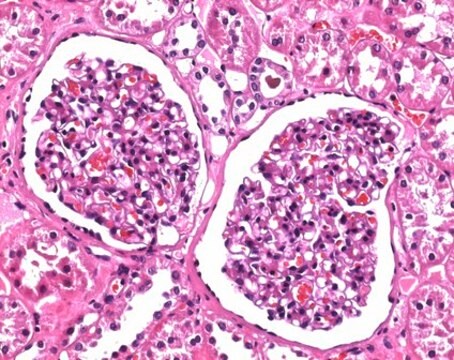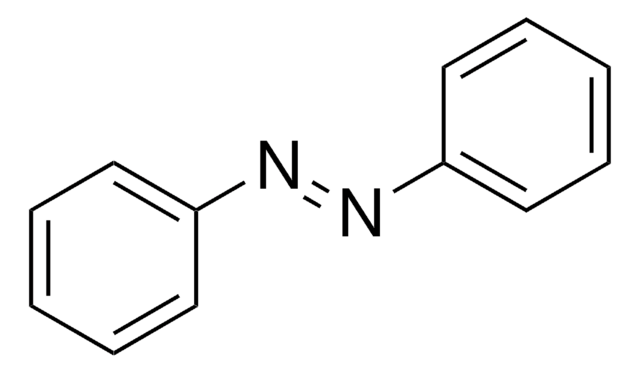441244
Paraformaldehyde
prilled, 95%
Sinónimos:
Polyoxymethylene
About This Item
Productos recomendados
densidad de vapor
1.03 (vs air)
Nivel de calidad
presión de vapor
<1.45 mmHg ( 25 °C)
Análisis
95%
formulario
prilled
temp. de autoignición
572 °F
lim. expl.
73 %
mp
120-170 °C (lit.)
temperatura de transición
sublimation point 150 °C
solubilidad
alcohol and cold water: slightly soluble
ethers, hydrocarbons and carbon tetrachloride: insoluble
densidad
0.88 g/mL at 25 °C (lit.)
InChI
1S/CH2O/c1-2/h1H2
Clave InChI
WSFSSNUMVMOOMR-UHFFFAOYSA-N
¿Está buscando productos similares? Visita Guía de comparación de productos
Descripción general
Paraformaldehyde is also referred as polyoxymethylene. It participates in the regioselective reductive coupling reactions of dienes, alkynes and allenes in the presence of ruthenium catalyst. It also participates in the synthesis of esters, via alkoxycarbonylation of alkenes.
Aplicación
Características y beneficios
Decomposes in hot water to give formaldehyde.
Palabra de señalización
Danger
Frases de peligro
Consejos de prudencia
Clasificaciones de peligro
Acute Tox. 4 Inhalation - Acute Tox. 4 Oral - Carc. 1B - Eye Dam. 1 - Flam. Sol. 2 - Muta. 2 - Skin Irrit. 2 - Skin Sens. 1 - STOT SE 3
Órganos de actuación
Respiratory system
Código de clase de almacenamiento
4.1B - Flammable solid hazardous materials
Clase de riesgo para el agua (WGK)
WGK 2
Punto de inflamabilidad (°F)
Not applicable
Punto de inflamabilidad (°C)
Not applicable
Equipo de protección personal
Eyeshields, Faceshields, Gloves, type P3 (EN 143) respirator cartridges
Elija entre una de las versiones más recientes:
¿Ya tiene este producto?
Encuentre la documentación para los productos que ha comprado recientemente en la Biblioteca de documentos.
Nuestro equipo de científicos tiene experiencia en todas las áreas de investigación: Ciencias de la vida, Ciencia de los materiales, Síntesis química, Cromatografía, Analítica y muchas otras.
Póngase en contacto con el Servicio técnico








